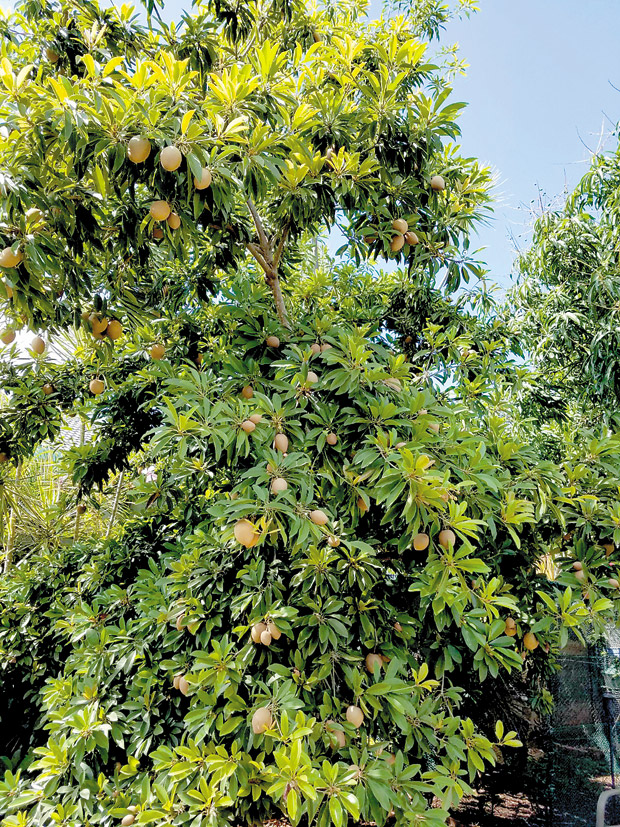When my family and I travel, no matter the destination, our excursions always revolve around food. If we are going somewhere familiar, we have our go-to, must-eat meals and snacks. When relatives come to visit us here in Hawaii, it is no different.
One of the must-haves for relatives coming from Ohio is chico fruit from my dad’s tree. I remember the first time my mom had it. She closed her eyes and reminisced, bringing up memories of eating the fruit as a kid in the Philippines. “I haven’t had it since then,” she said. Luckily, my dad’s tree is bountiful. It fruits all year round, and the rest of us reap the benefits.
Chico fruit, which is also known as sapodilla, resembles a kiwi in color and shape, but its size is larger. It has a tough outer skin that is similar to kiwi, but without the fuzz. The inside is white when unripe and closer to a beige brown when ready. It has an almost creamy, yet gritty texture and tastes sweet like brown sugar. According to the California Rare Fruit Growers (CRFG), it can also taste similar to a pear.
If you want to grow a chico tree of your own, you’re in luck. Hawaii’s weather is particularly conducive to the trees, which prefer sunny, warm and frost-free locales, according to CRFG. They can tolerate both wind and salty air, and do well in both humid and dry environments, according to CRFG.
Start with a young tree from a local nursery. You can try growing one of your own from the seeds, but you will have to wait five to eight years before the tree is mature enough to bear fruit. When attempting to establish a new tree, CRFG recommends fertilizing every two to three months in the first year, and two to three times per year after that.
When deciding on location, remember that these trees need some space to stretch out. The Botanical Growers Network recommends spacing them at least 10 feet from other trees or shrubs. They also recommend well draining soil, ideally in a mixture of soil, sand and perlite.
When it comes to watering, err on the drier side. Overwatering can kill the trees, so Botanical Growers Network recommends waiting until the top 2 inches of soil are dry.
As far as other forms of maintenance, such as pruning and pest protection, you can relax. The trees require little pruning, and are not particularly harmed by insects or diseases, according to CRFG.
Have a comment or question for Joanne? Email thefixisinhawaii@gmail.com.

